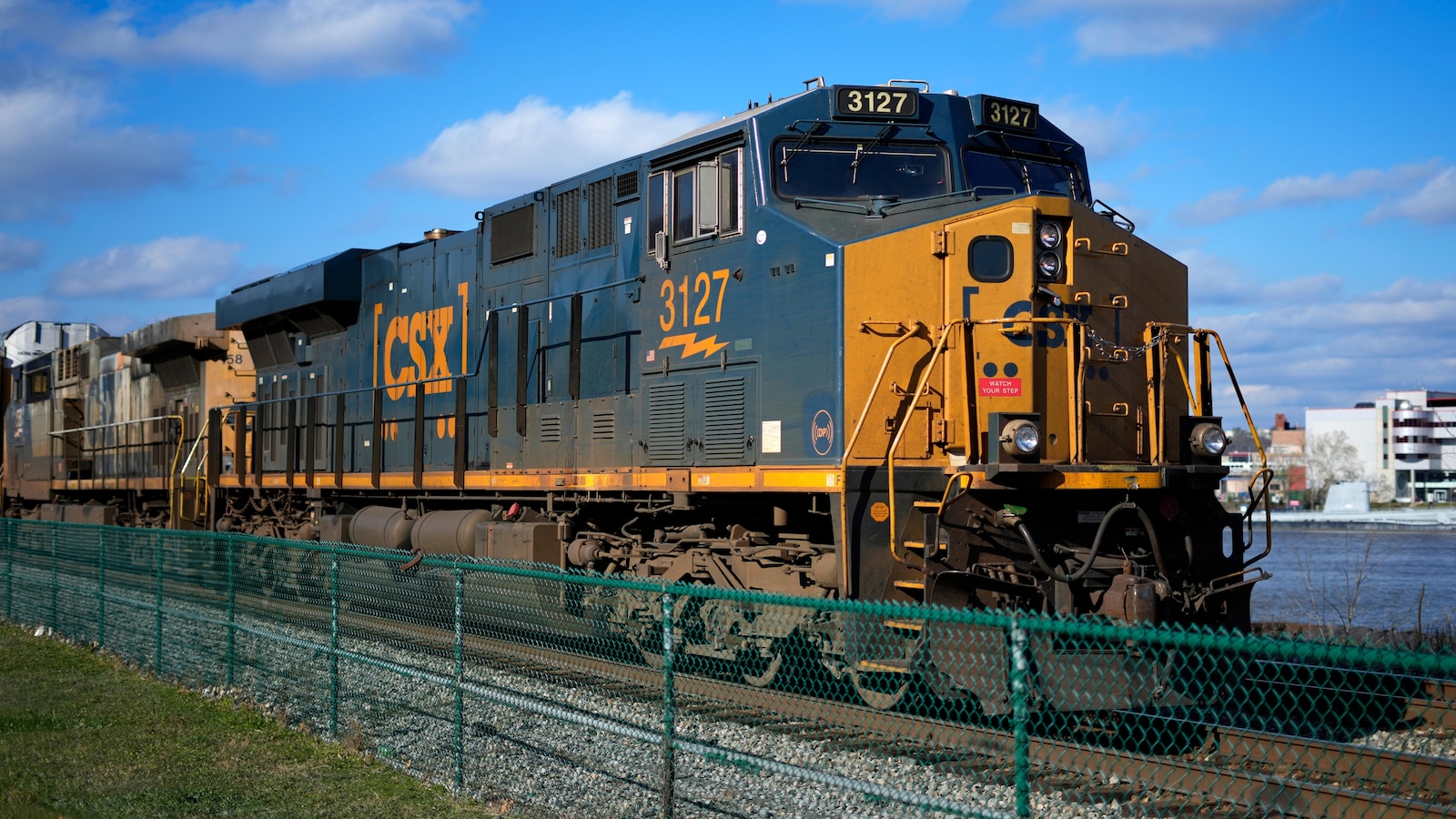CSX’s first-quarter profit slipped 10% even though the railroad delivered 3% more goods, as shipments it handed shifted to a less-profitable mix.
The Jacksonville, Florida-based railroad said Wednesday that it earned $893 million, or 46 cents per share, in the first three months of the year. That’s down from $987 million, or 48 cents per share, a year ago.
The results were slightly better than Wall Street predicted. The analysts surveyed by FactSet Research expected CSX to report earnings per share of 45 cents.
CEO Joe Hinrichs said he was pleased the railroad was able to deliver consistent customer service that helped it attract more business. He said many of the markets CSX serves are seeing “favorable trends,” so he’s optimistic about the rest of the year.
CSX said its revenue slipped 1% to $3.68 billion. Wall Street expected CSX to report revenue of $3.66 billion in the quarter.
The railroad reiterated that it expects revenue and shipping volume to grow at low- to mid-single-digit rates this year.
After the bridge collapse in Baltimore last month forced that port to close, CSX scrambled to reroute traffic to other East Coast destinations. But given that Baltimore is the second largest coal export port, coal shipments could be hurt. The port disaster will be felt in the railroad’s second-quarter earnings, as workers are still trying to clear the wreckage of the bridge so the port can reopen.
CSX is one of the nation’s largest railroads, operating trains on more than 20,000 miles (32,000 kilometers) of track in 23 Eastern states and two Canadian provinces.
Shares of CSX Corp. were up about 1.8% in after-hours trading following the release of the earnings report.
Also Wednesday, CSX announced that Hinrichs’ predecessor as CEO, Jim Foote, had died. Foote led the railroad through its transition to the precision scheduled railroading operating model after industry titan Hunter Harrison died in 2017 — less than a year after taking over CSX and beginning the reforms to streamline the railroad.
The model relies on using fewer, longer trains with a mix of freight on them, so railroads can operate with fewer locomotives and employees. Since CSX put it in place, the model has been adopted by other U.S. railroads. Collectively, the major U.S. railroads have used the model to cut nearly one-third of their workforce, prompting unions to complain they believe railroads have become riskier because employees are spread so thin and preventative maintenance and inspections are being neglected.

